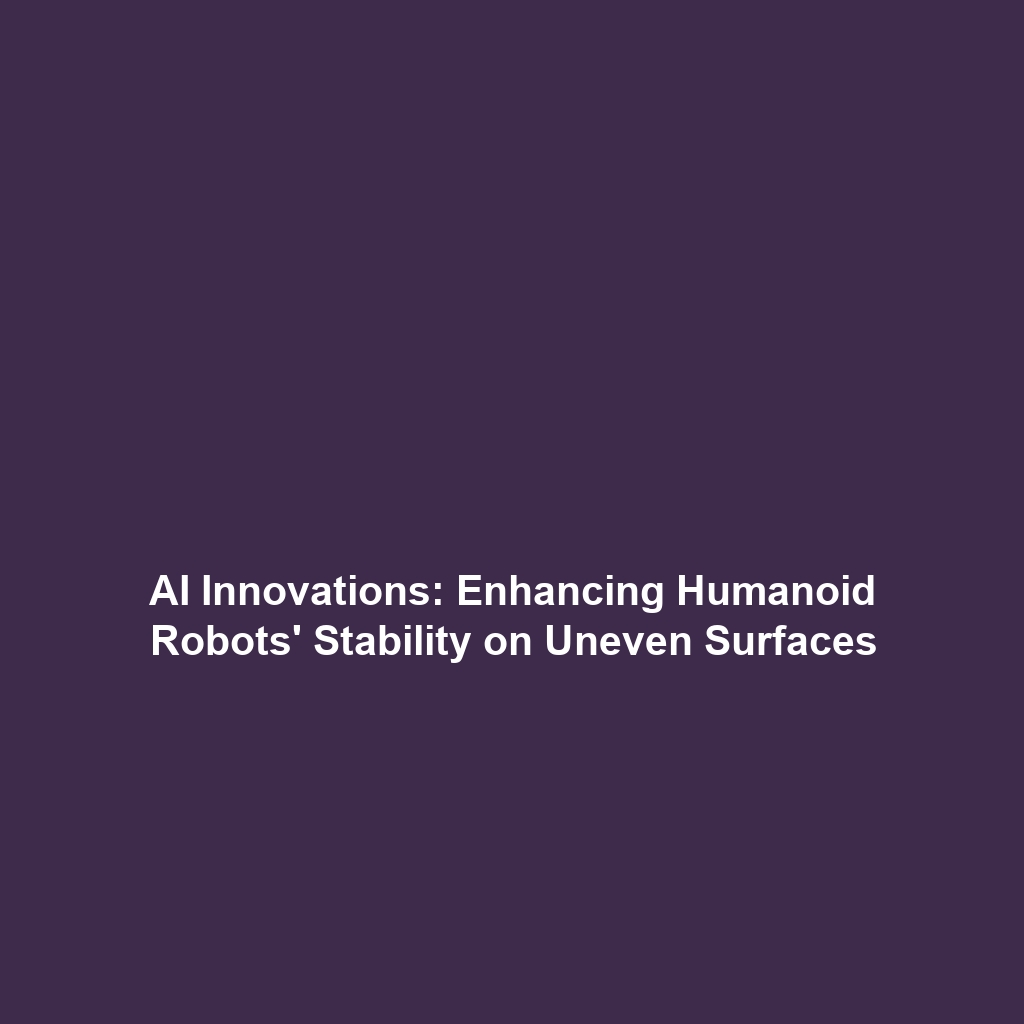The Role of AI in Helping Humanoid Robots Navigate Uneven Surfaces and Maintain Stability
The integration of artificial intelligence (AI) in humanoid robotics signifies a groundbreaking advancement in technology. Understanding the role of AI in helping humanoid robots navigate uneven surfaces and maintain stability is essential to addressing challenges in real-world environments. This article aims to delve into the AI techniques that are enhancing humanoid robots’ locomotion abilities, allowing them to traverse complex terrains while ensuring safety and efficiency.
Key Concepts
At the core of AI-enhanced stability in humanoid robots are several key concepts that facilitate their movement on uneven surfaces:
- Machine Learning: Humanoid robots employ machine learning algorithms to analyze and adapt to irregular terrains by gathering data and improving their movement strategies.
- Real-time Sensor Integration: Sensors collect data on environmental conditions, allowing the humanoid robots to adjust their balance and locomotion dynamically.
- Control Systems: Advanced AI algorithms optimize control systems that manage joint movements and adjust postures effectively, ensuring stability.
Applications and Real-World Uses
The role of AI in assisting humanoid robots in navigating uneven surfaces has numerous practical applications:
- Disaster Recovery: Humanoid robots equipped with sophisticated AI algorithms can assist in disaster scenarios by navigating debris-strewn environments where humans cannot easily operate.
- Healthcare: In healthcare settings, these robots can traverse uneven flooring and assist patients, improving mobility and providing support in rehabilitation.
- Search and Rescue Operations: AI-powered humanoid robots are increasingly being deployed in search and rescue operations to navigate difficult terrains, ensuring safety and stability.
Current Challenges
Despite significant advances, there are still challenges in the deployment and study of humanoid robots navigating uneven surfaces:
- Environmental Variability: Sudden changes in terrain make it difficult for robots to predict their movement patterns.
- Energy Efficiency: Maintaining balance and movement can lead to high energy consumption, limiting operational time.
- Complex Control Algorithms: Developing simpler yet effective control algorithms remains a major hurdle in AI robotics.
Future Research and Innovations
The future of AI in humanoid robotics is promising, with ongoing research focused on:
- Advanced AI Algorithms: Future innovations include the development of even more sophisticated algorithms that will enhance stability and navigation capabilities.
- Hybrid Sensor Systems: Integrating various sensor technologies will improve environmental perception, helping robots adapt to new and unpredictable terrains.
- Collaborative Robotics: Research into multi-robot coordination may lead to enhanced capabilities in uneven terrain navigation, allowing teams of robots to work together to overcome obstacles.
Conclusion
In summary, the role of AI in helping humanoid robots navigate uneven surfaces and maintain stability is crucial for advancing robotics technology. As AI continues to evolve, its application in humanoid robots will likely increase, leading to transformative changes in various industries. For more insights into the world of humanoid robots and AI innovations, explore our comprehensive resources on related topics.

